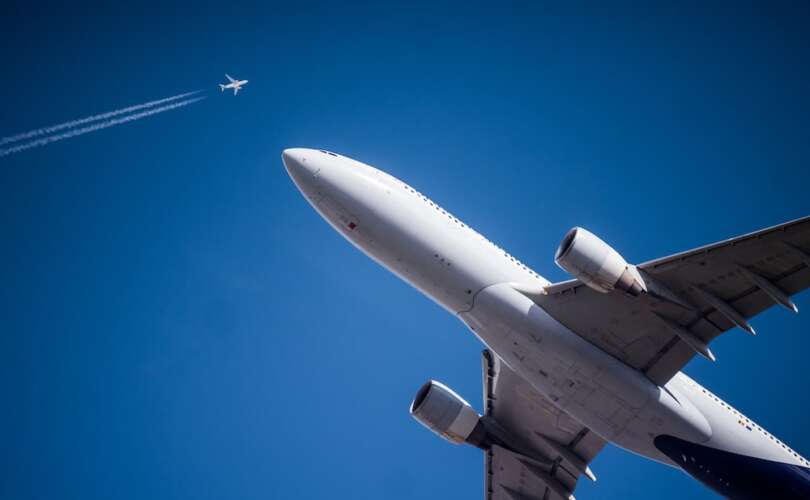How the industry learned the lessons from 9/11
The tragedy of 9/11 was a pivotal moment in modern civil aviation history.
An industry that had built peace by connecting nations had been used as a weapon of terrorism.
Traffic plummeted temporarily and the approach to protecting aviation from terrorism took on a completely different dimension.
Most visibly for air travelers, it led to the transformation of the airport security checkpoint and—together with subsequent foiled plots, such as the shoe bomber—fostered an array of measures intended to ensure that such events could never be repeated.
As the industry begins its recovery in a post-pandemic world, the lessons learned from the 9/11 response should not be ignored.
Scalable solutions
The positive aspect of the security changes brought about by 9/11 is that there has been no repeat of an attack on that scale. “That is the number one KPI (key performance indicator),” says Matthew Vaughan, IATA’s Director, Aviation Security and Cyber. “Aviation has become too difficult a target for terrorists and from an aviation security performance perspective that means the counter measures have largely worked.”
But there are caveats to this assertion. Questions surrounding risk assessment, secure passenger facilitation, and collaboration throughout the value chain must be answered.
Risk assessment is an aviation strength but can be a less precise science in the public arena. After 9/11, for example, many people in the United States took to their cars for long journeys, either owing to terrorism fears or to avoid long waits and hassles at airport security. The unintended consequence was higher automotive fatalities.
Without a risk assessment, blanket measures necessarily cover every eventuality. Post 9/11, every airport forced passengers to divest certain articles, causing long queues until process maturity could be achieved. Fortunately, aviation has evolved the primary security layer to strike a balance between getting the overwhelming majority of low-risk passengers through the airport while providing a protection layer for high-risk (or untrusted) passengers that is both physical and digitally based at the airport main gateways.
This balance has been principally aided by predictability. Of course, there needs to be an unknown element to any checkpoint, so the passenger does not entirely know what to expect. But Vaughan says this cannot come at the expense of a large degree of predictability.
“Otherwise, queues would be out the airport door because people would not come to the airport prepared,” he says. “The holy grail is getting the passenger from curb to aircraft, based on informed risk assessment, without needing to unnecessarily stop them.
“Security risk varies according to the origin, destination and numerous other factors,” continues Vaughan. “The guidance is there to ensure harmonized but scalable solutions. A proper risk assessment and implementing appropriate time-sensitive responses should not be an insurmountable obstacle.”
Parallels with COVID
Vaughan accepts that security still isn’t seamless, and the passenger experience has suffered. “This shouldn’t be repeated with [COVID-19] health protocols,” he says.
There are, however, parallels. Just as security measures increased enormously after 9/11, the industry is now faced with blunt tools such as quarantines which is going to take time to roll back or modify based on viable risk-based compromises.
Though some government leaders imply international travel has contributed to the spread of the virus, it is not as important a factor as many would perceive. And over the past 18 months of experience much has been done to reduce the risk. Studies have concluded that the onboard environment is among the safest enclosed spaces, and the correct vaccination and testing protocols add further preventative layers.
“There are different epidemiological situations across the world and that will continue to be the case,” says Vaughan. “There should be risk assessments in place just as there should be in security.” Risk assessment simply ensures measures are usefully applied where the risk is greatest or largely unknown.
The key to achieving good security and managing health protocols while ensuring passenger throughput at pre-COVID traffic levels is collaboration and specifically stakeholder exchanges borne of trust.
In some respects, 9/11 improved collaboration significantly. Intelligence agencies worked together to stop further threats and a security culture involving governments, airports, and airlines developed that has persisted. The same can be achieved with health authorities and there is already evidence of this with the sharing of knowledge regarding variants.
IATA security initiatives have helped to progress the security situation too and establish best practice. Similarly, the IATA Travel Pass offers a ready-made format for presenting health information.
Lack of trust
Despite this, Vaughan believes the level of bi-lateral and multi-lateral trust that had enabled international aviation to grow has not been so evident in the security arena since 9/11.
“We have been stuck with onerous and, for transit passengers, repetitive security requirements because each country essentially wants to secure its own borders,” says Vaughan. “They don’t trust another government to do it for them. And in truth, universally, there has been little pre-decisional consultation with the industry on implementation, on what security measures mean for risk and what they mean to air connectivity and passenger facilitation. The same has happened for health protocols in the pandemic too.”
For Vaughan, the way forward for both security and health safety is clear. “After 9/11, we saw a reaction to specific threats that then became ingrained,” says Vaughan. “The regulatory response was designed to bring confidence back, but certain aspects should have been temporary and not permanent.”
It means innovation has been focused on solving problems that need not exist. Furthermore, given the parlous state of aviation finances, it is unlikely that there will be a great deal of security innovation in the near future. Added to this is a seeming lack of political will to develop and/or endorse specific industry solutions. Today’s measures—for both security and health protocols—will have to stand the test of time in terms of investment and maintenance cost.
“We do need the funding for research and development and to run pilots,” Vaughan concludes. “But we are not walking away from innovation. We have a vision for seamless passenger travel. And with the lessons learned from the security arena since 9/11, it makes aviation an ever-growing area of opportunity for solutions that leverage technology to balance excellent security or health safety with strong passenger throughput.”
STOP PRESS EXTRA: Known Traveler Programs
Biometrics is often touted as the solution to managing facilitation and good security and border controls.
The technology is a near-perfect way of managing identity that should generate trust between different parties in the aviation travel chain, including border control, airports, and airlines.
Some 70% of the world have subscribed to e-identification guidelines endorsed by ICAO and the pandemic has only served to emphasise the opportunity. But the technology alone is the not the answer.
Vaughan turns to known traveler programs to illustrate the point. “Twenty years’ on from 9/11, it’s really only the United States and Canada that have developed known traveler programs,” he says. “A major problem is that the programs mean little outside home jurisdictions. And there are limited risk-based processes when it comes to security.
“We learned that these programs are border-control-focused and not necessarily security-focused,” continues Vaughan. “For example, Australia was one of the first countries to establish interactive API post-9/11 but didn’t leverage that to correlate it with the risk a passenger represents to flight.”
In health safety terms, therefore, it means vaccination and testing status must be aligned with a passenger’s biometric ID. A secure method of exchanging passenger health information will be a necessary element of the industry recovery.



